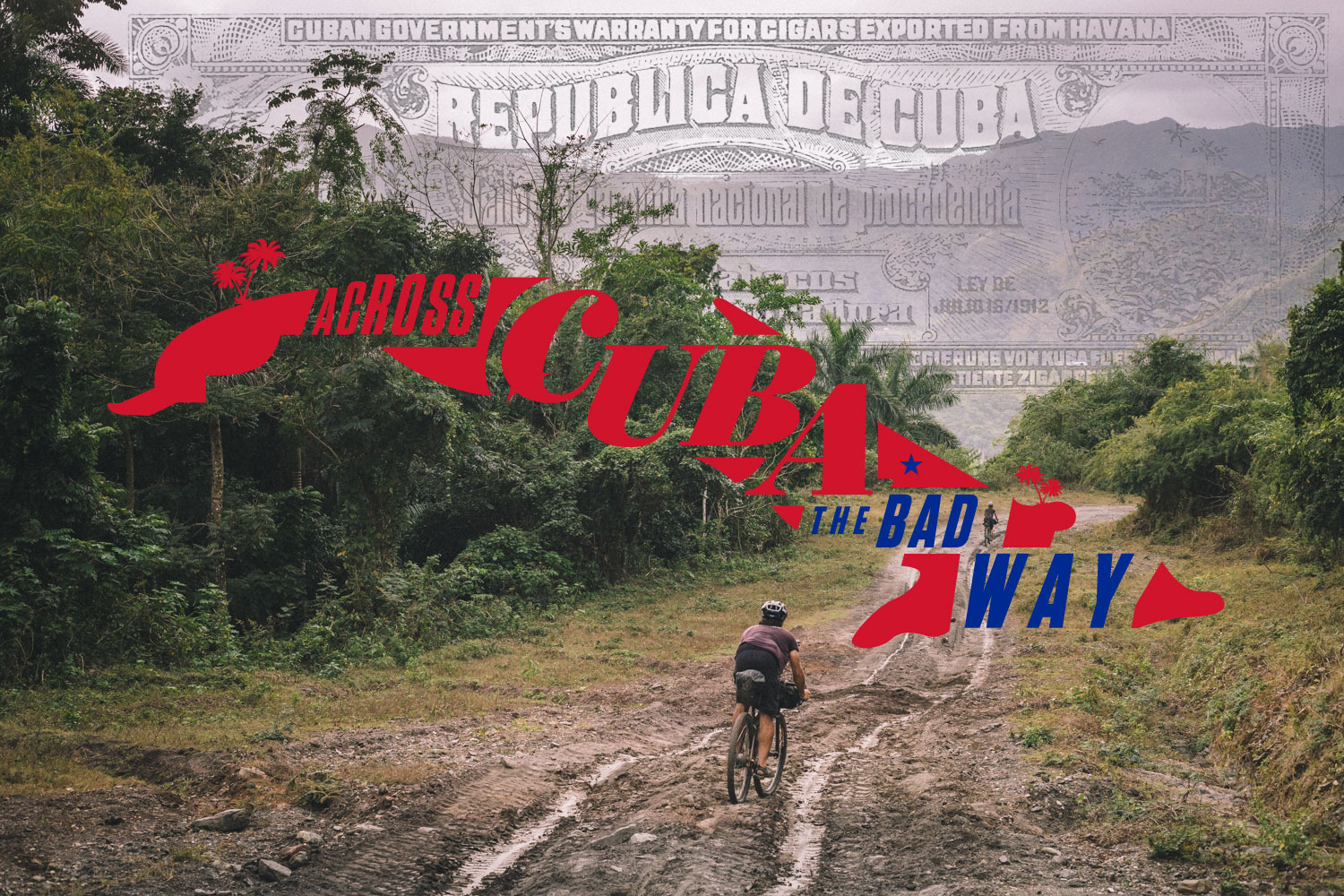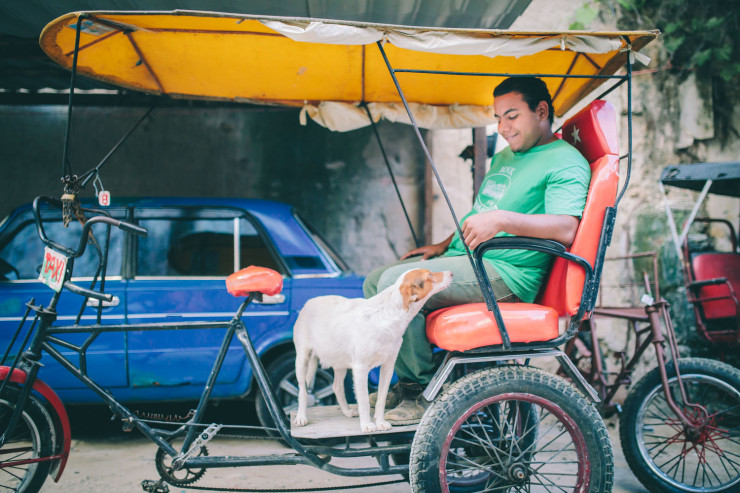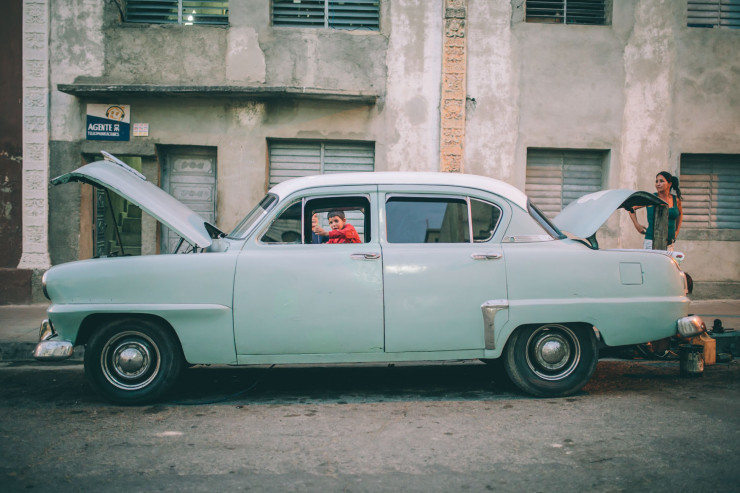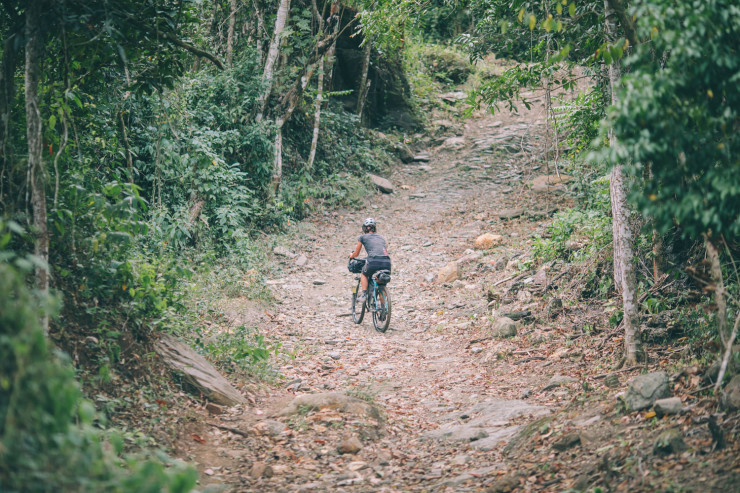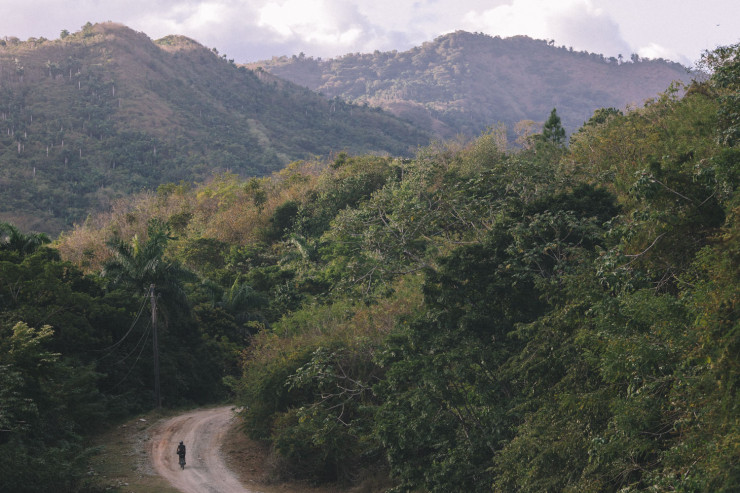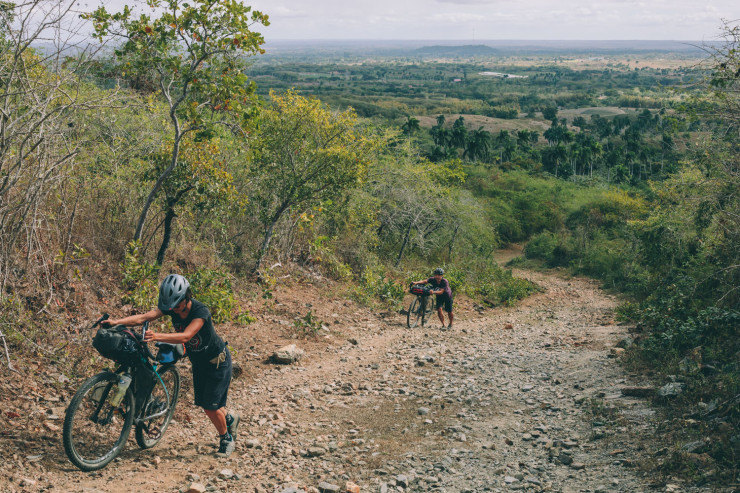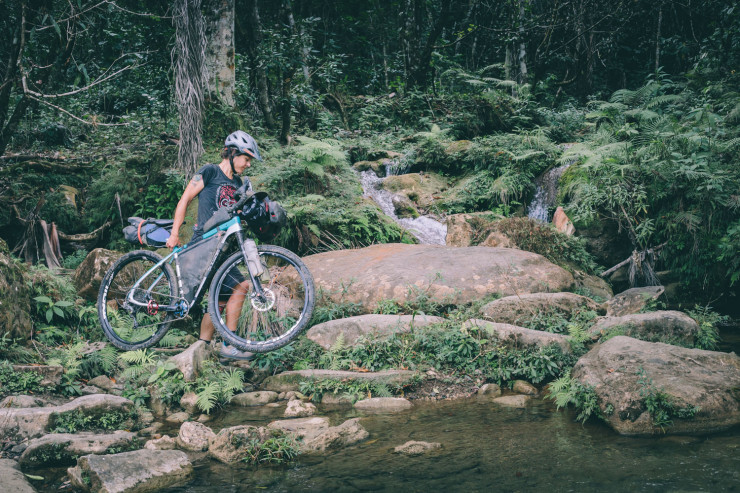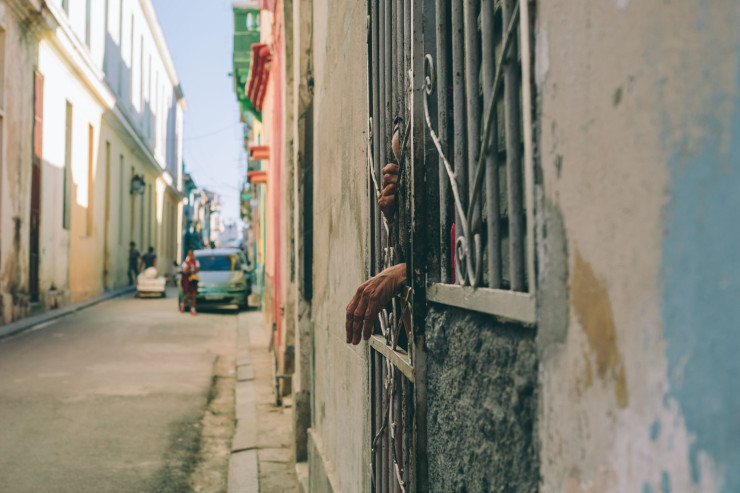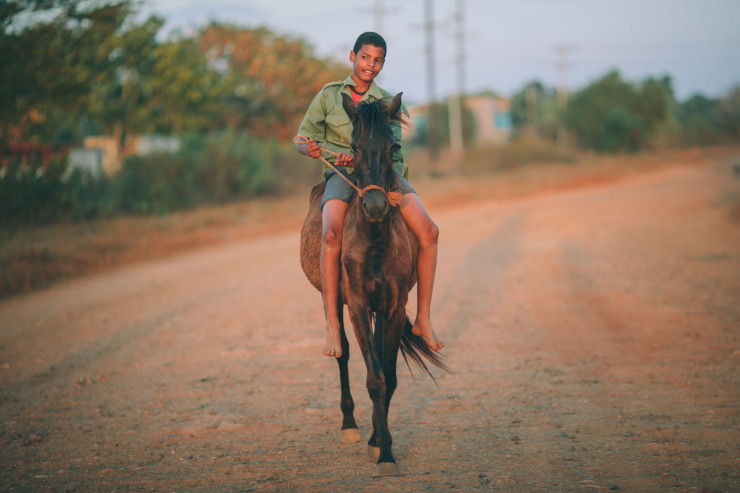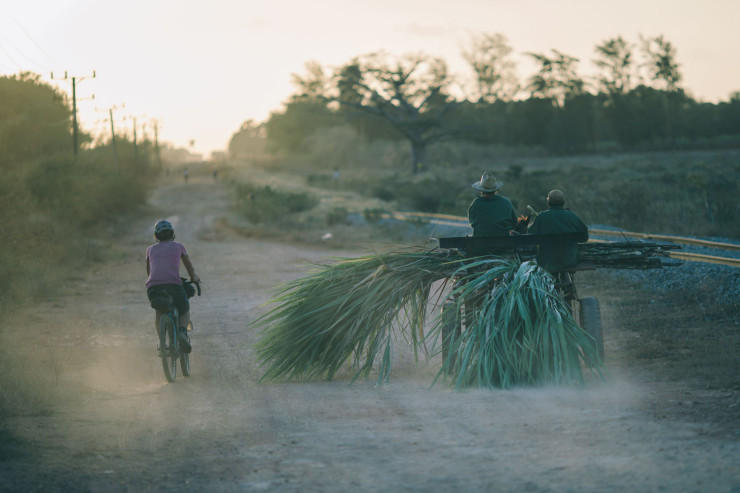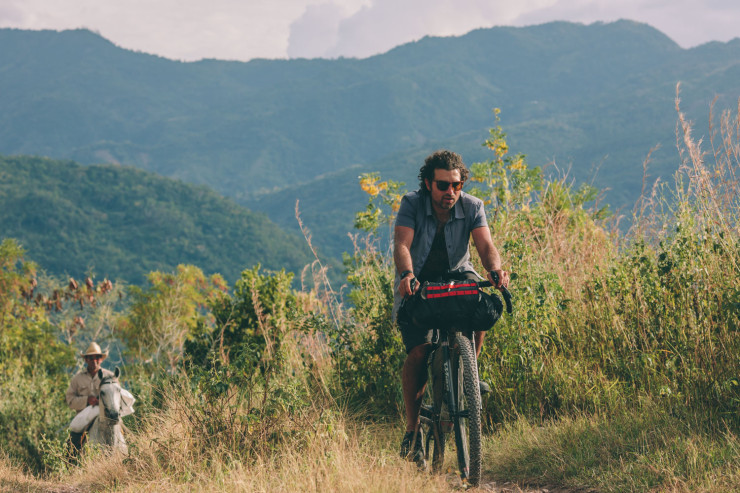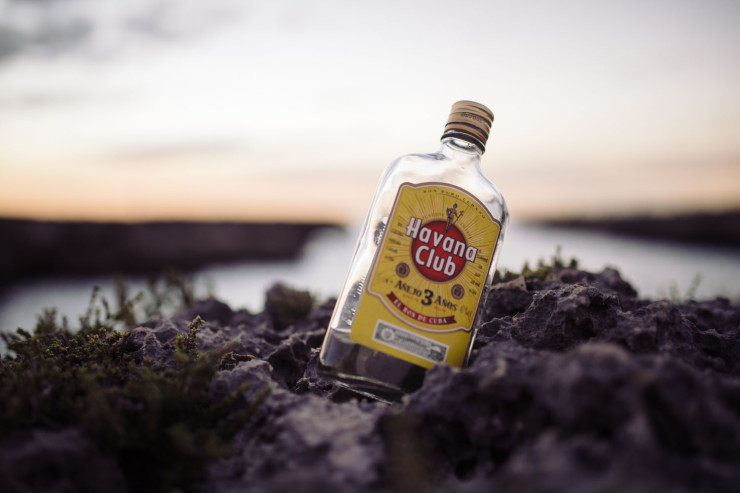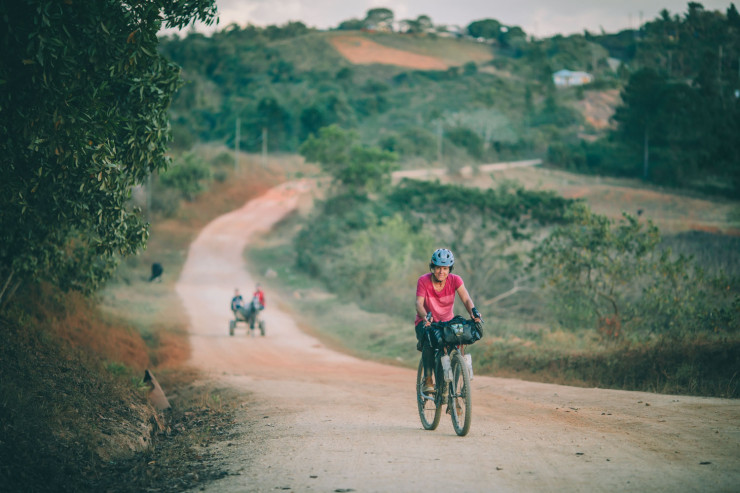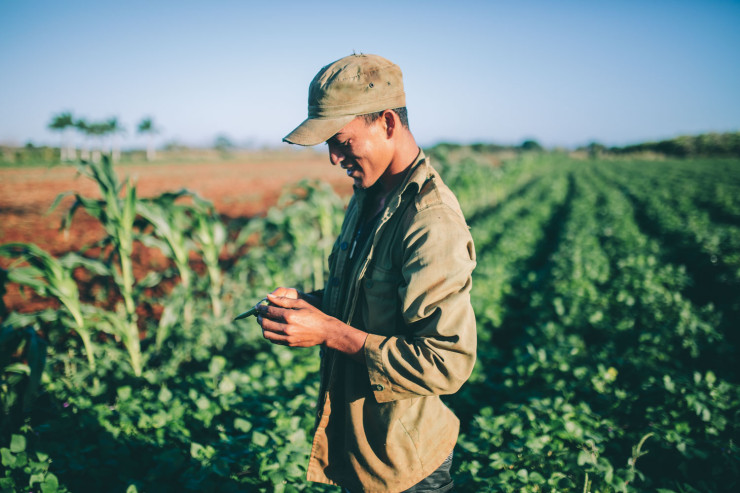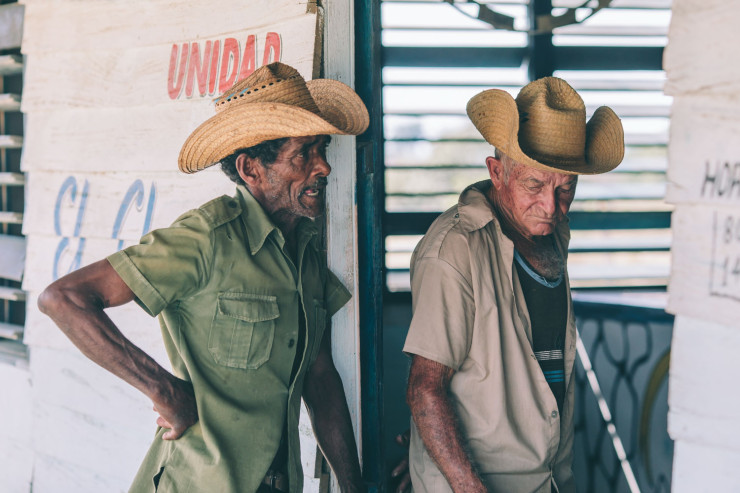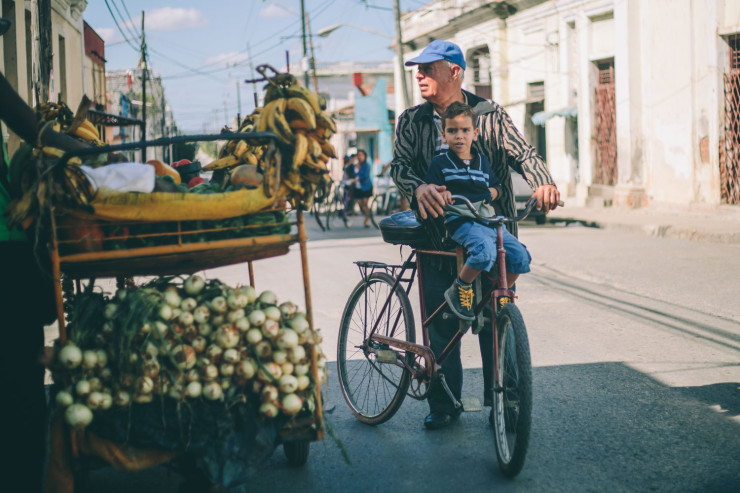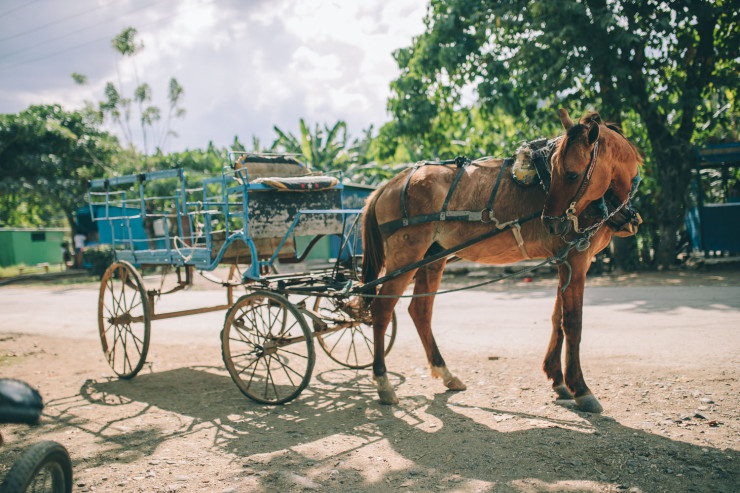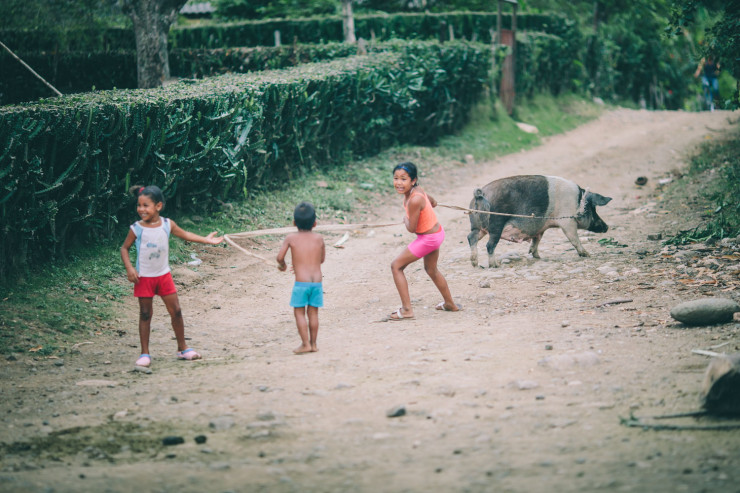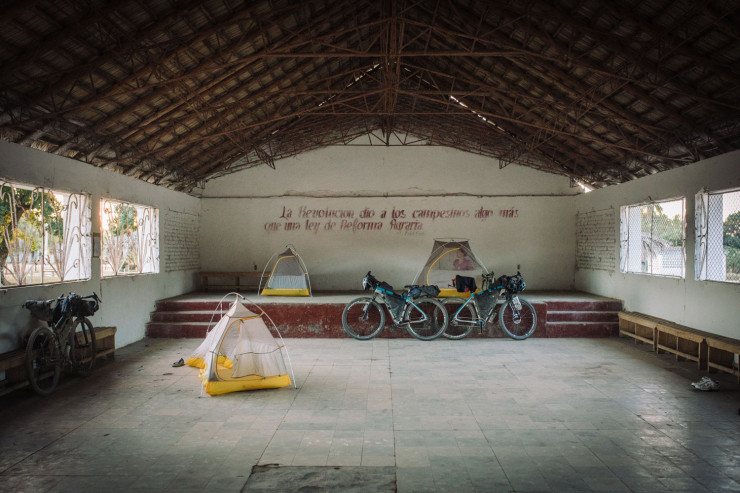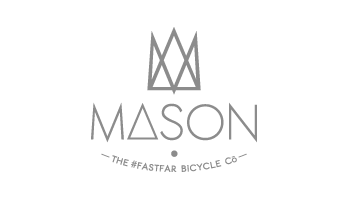Across Cuba… the bad way.
After just a single day into our Cuba traverse, we unanimously agreed that the route should be named ‘La Ruta Mala’, or ‘the bad way’. That’s quite a contradiction considering that our bikepacking trip across The Pearl of The Antilles would turn out to be a beautiful and fantastic adventure. But, then again, it took less than 24 hours to realize that Cuba is brimming with anomaly.

“ Let the world change you and you can change the world.” – Ernesto Che Guevara

The idea of exploring Cuba by bike had been churning and kicking around in the back of my brain for quite some time. Perhaps part of its draw was the fact that — as an American — I wasn’t ‘allowed’ to go there. A forbidden fruit, as it were. Aside from a small number of intrepid Americans who sidetracked travel restrictions via Cancun, not many Yankees have cast their shadows on our neighbor’s sun-bleached coral soil — not since the US imposed an embargo on the country in 1958. I wondered what Cuba was really like… beyond surface impressions from films, Anthony Bourdain, and snapshots of 1950’s cars and portly cigar wielding men in white Guayabera shirts.
It’s difficult to prepare oneself for a new place when 99.99% of your fellow countrymen haven’t been there. From a bike travel perspective, what little information we accumulated prior to our departure was plucked from blogs and trip reports by traditional European bike tourists who had mostly explored the paved thoroughfares of the island. While the proverbial seas between the US and Cuba had just been parted a few months back, Europeans and Canadians have been visiting Cuba for years. From their reports we gleaned three main insights, which all but sealed the fate of our hopes to string together a proper dirt bikepacking route across the island: 1. The Cuban road system is largely limited to gently rolling and carless tarmac roads; 2. There’s no camping — that’s a government no-no. You must stay in hotels or casa particulares, modest homes with one or two rooms for rent; 3. If you’re hungry, you’d better get to a casa particular… the only way to get food is to have it prepared by your hosts. Stores do not exist for tourists.
This wasn’t our first rodeo, so we were a bit skeptical about these tenets. We decided to forge ahead and booked our flights. By the afternoon of Expedition Day 1, all three rules had been dispelled. In fact, we realized that the Cuba we’d landed in was a far cry from the mental picture we’d pieced together.
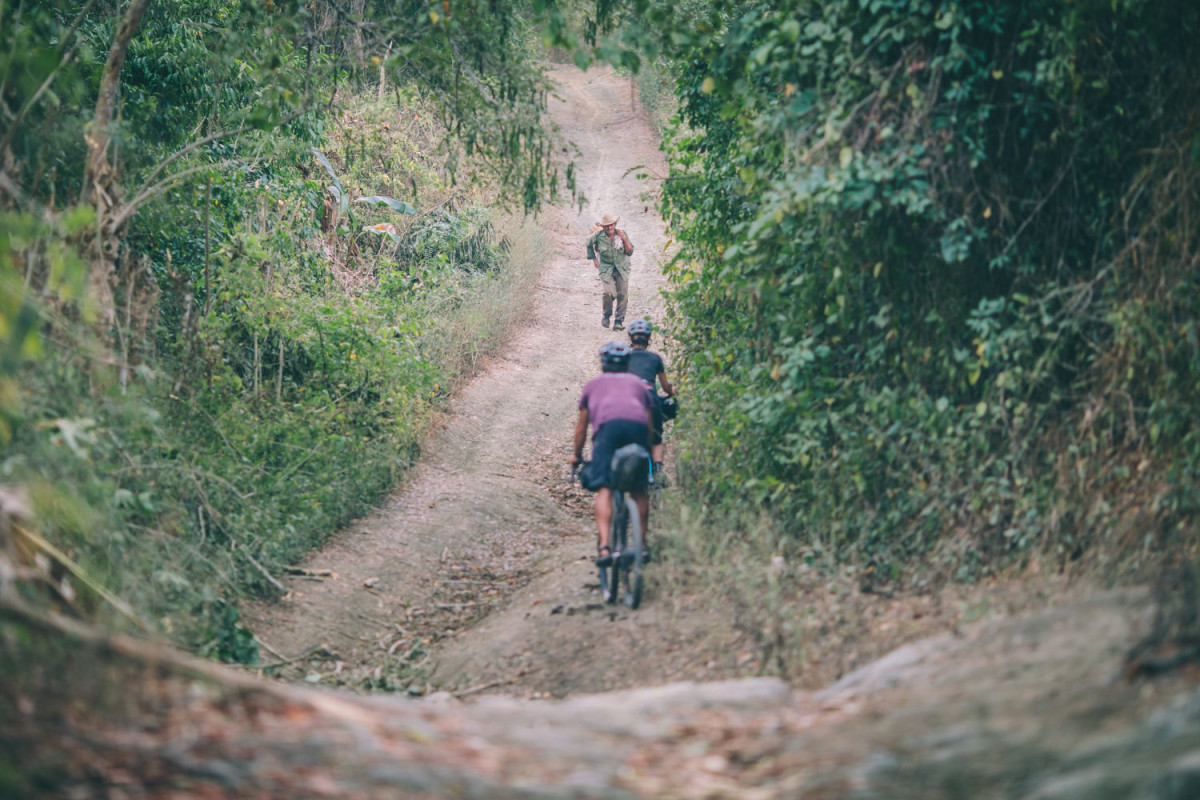
¡Malo es Bueno!
Our objective was to cycle across Cuba from east to west using as much unpaved surface as possible. As with most of our bikepacking trips, we intended to seek out the least travelled tracks and find the true character of the country and her people. But, based on the intel we’d gathered, we expected these off-road tracks to account for 50% or fewer of our total miles, so we brought drop-bar bikes with the assumption that gravel and tarmac would be our travel partner for a better part of the route. We stuck with mountain bike tires though, just in case. On the morning of January 1st, Joe, Virginia and I started our route from Santiago De Cuba, the second largest city in the country. We casually warmed up our legs along a rolling stretch of asphalt next to the deep blue Caribbean waters. We were following a route Joe and I’d painstakingly cobbled together by poring over blurry satellite imagery, faint dashes on paper maps, and the dramatic topographic lines that make up Cuba’s three distinct mountain ranges.
After 20 miles, we bumped into our first question mark on the map. We had plotted two options, because we simply didn’t know what to expect. We’d either stick to the safe bet and stay along the the coastal route, where the road might deteriorate a bit, or head north into the thick unknown of the Sierra Maestra mountains — either make good time and find a casa particular in a small coastal village, or ration a couple days worth of food and hope for stealth camping options amongst the rugged folds of the Sierra for a few days. Rarely ones to shy away from the ‘adventure route’, we chose the latter option. We immediately started up a steep, rocky track. The farther we advanced, the rougher the ‘road’ became. By dusk we were pushing our bikes up a rubbly steep grade that made Guatemalan roads look flat. So much for Cuba Bike Travel Rule #1. In the end, we discovered that most of Cuba is crisscrossed with a maze of rowdy dirt tracks, horse paths and rocky mountain roads that, for the most part, never see cars. At least twice daily we were stopped and asked where we are going. Farmers, old-timers, and children all waved and shouted that this way was the wrong way. On each occasion we politely explained that, “Nos gusta la ruta mala; con estas bicicletas, no necesitamos carreteras; no nos gustan las carreteras.” In short, “we like the bad way.”

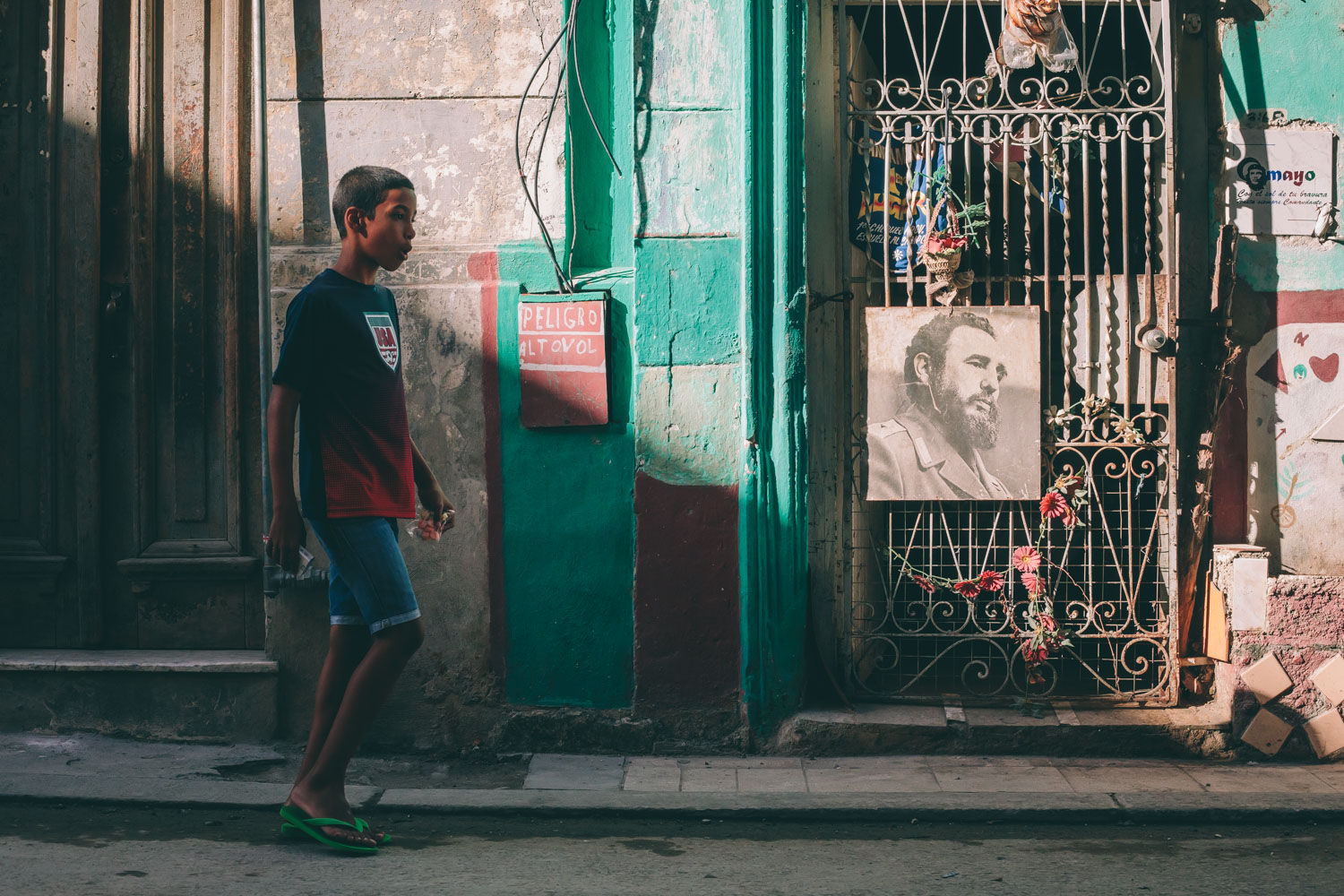
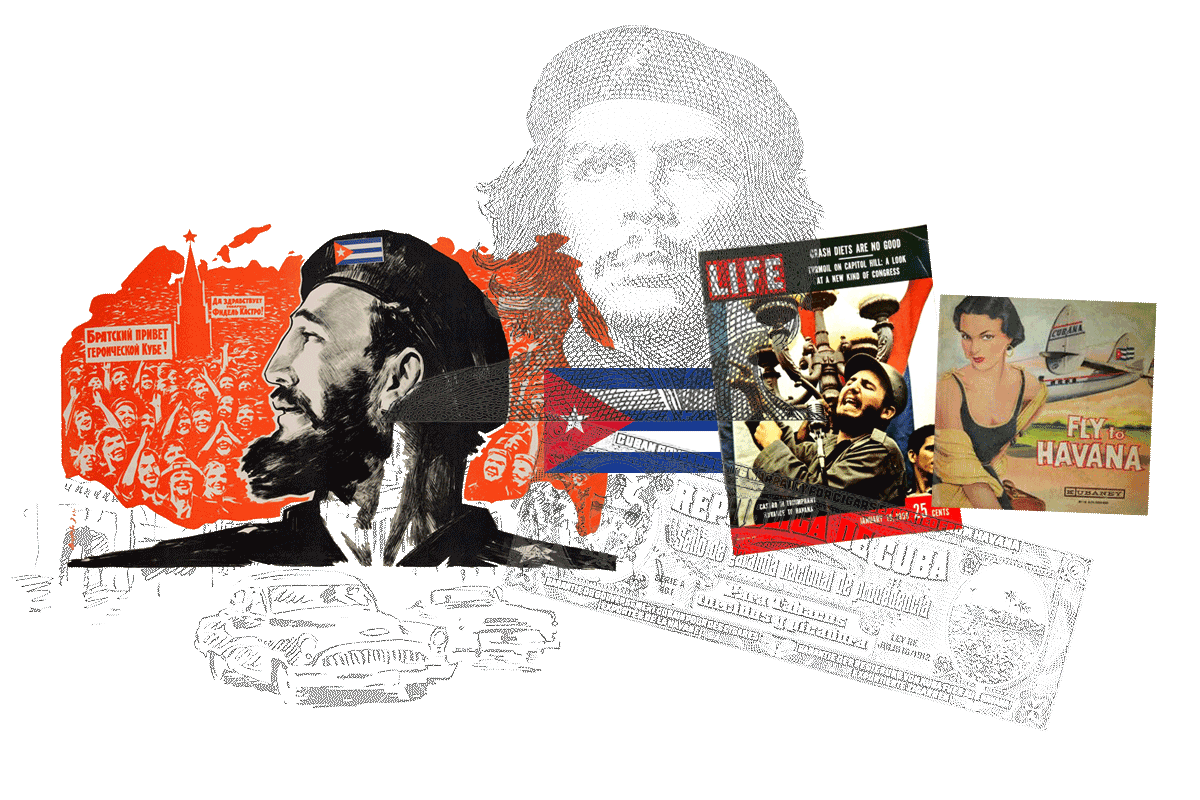
Us vs Cuba
Based on our pre-planned route, I figured we’d be pedaling through backwaters generally unexplored by bike tourists, let alone Americans. I didn’t have high hopes as to how three Americans would be received by Cuba’s campesinos, or country farmers. After all, we hail from the country that, while being one of their closest neighbors, remains the most distant. A 59 year trade blockade has caused suffering for the Cuban people, especially the poorest amongst them. The UN believes that the repercussions of ‘our’ actions have been detrimental enough that the General Assembly has passed resolutions condemning the U.S. embargo every year since 1991. Moreover, as evidenced by roadside billboards and building facades, there’s plenty of government propaganda fueling anti-American sentiment in Cuba, pointing fingers at American imperialism and greed. I knew there would be some politics to wade through somewhere amongst Cuba’s tropical jungles.
Coincidentally, we arrived in the country shortly after the death of its long-time leader and ‘liberator’. Some citizens were still mourning Fidel, while many were enthusiastic about the changes that Raúl has brought about and looking forward to more change in the future. To perfectly mirror the divisions felt amongst Cuba’s citizens, we happened to time our trip just after our own controversial elections. Whether we liked it or not, a new US president would be sworn into power while we were there. We hoped he wouldn’t build a wall between home and us during his first couple of weeks in office. Even more, the timing made all of this feel amplified. Cuba’s history was palpable as was its questionable future. The entire country was a whirlwind of a place locked in time. Everywhere we we turned there were cultural artifacts from the Revolucíon, conspiracy theories and questions about their future… as well as questions about America’s future with its most estranged neighbor.
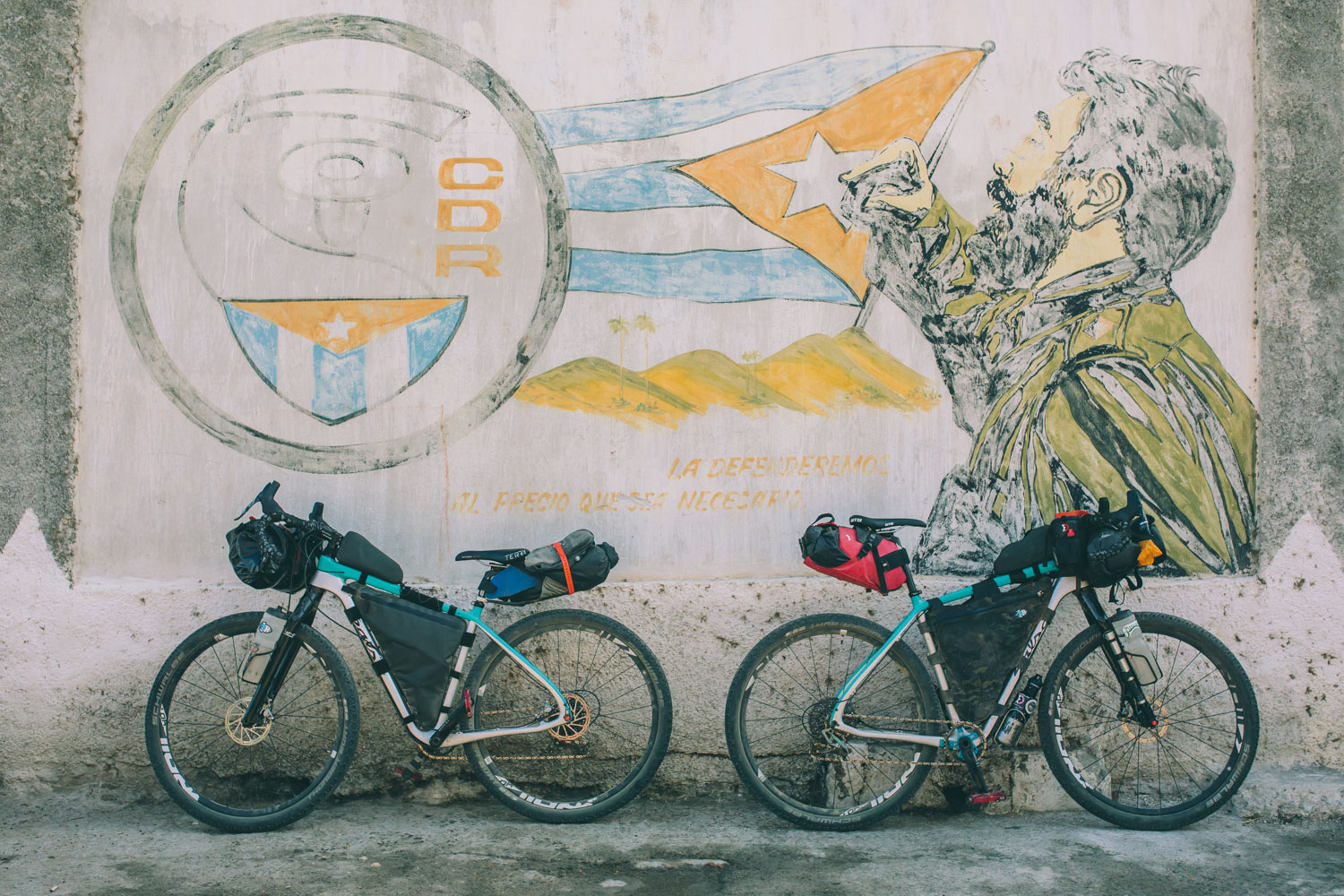

As we heaved our bikes up the Sierra Maestra that first evening we had our first taste of true Cuban hospitality and caught a glimpse of what to expect for the next 3 weeks of our trip. I was a couple hundred grunts ahead of Joe and Virginia. A man toting a half liter of Havana Rum throttled the reigns of his horse, jumped down, and exuberantly greeted me with an offer to take a swig from the bottle. Why not? There was another gentleman and a cadre of children and dogs to follow — a dirt road parade in high spirits on that New Year’s Day. After a brief conversation, our new friend insisted that we stay at his house. It was dark and the road would only get steeper, he explained. I argued that we had tents and just needed a flat spot to pitch for the night. He then explained that he was a surgeon in Santiago, just visiting his wife’s family for the holiday… hard to believe coming from a man who spoke little to no English, wobbled in a half-drunken sway, and wore nothing but a cutoff pair of tattered brown trousers. I later learned — after a litre of wine and a second bottle of rum — that physicians in Cuba make the equivalent of about $50 USD per month. The house belonged to the doc’s in-laws, financially poor country farmers who insisted on preparing us dinner. We were their guests and we must have a proper meal. As we tried to rebut that we had our own food and it was unnecessary, they beat us back with insistent kindness. Doc sat us at a modest table in a dimly lit room next to the kitchen where wafts of woodsmoke and cooking meat made our eyes water. There were only three place settings. The family would dine later in the evening. As the grandmother served a home-cooked supper of pork, yucca, and Congri — beans and rice — we tried not to look like ravenous beasts as we feasted on one of the best meals we had in all of Cuba. Later Doc explained that Cubans, no matter their wealth, always feed and shelter travellers and visitors. It’s part of their culture.
Throughout our trip, the magnanimity of the Cuban people manifested itself on a regular basis. A dinner of chicken and congri from a family working on a bean plantation. Unknown rubbery meat and rice from three jungle dwelling coffee pickers. A lovely meal of fried bananas, soup and bread from a couple who made their living making bed springs. We were given fruit by men who seemingly popped out of the forest in the middle of nowhere. Time and time again, strangers treated us like family.

After hours of rum-fueled conversation and singing, we found out American Westerns are Doc’s favorite movie genre. He called me ‘hard-man’ and made gun slinging gestures. I reminded him of a character he’d seen in one particular flick about the gold rush. Maybe it was my beard that won us the spot at his family table that night. No matter the reason, the kindness and generosity we received that night set the tone for the rest of our journey. Ultimately the reception of three Americans throughout the backwaters of Cuba was overwhelmingly positive.
Gray is green
On the night prior to our rum-fueled introduction to Cuban bike travel we stayed with an elderly gentleman in Santiago. In the morning, he gave us a jubilant send-off, serenading us with show tunes from classic American Broadway productions. In his youth, Robert had been part of a musical act that performed all over the country, and, to this day, he dreams of making it to New York City.
Contrary to the gray and bleak uniformed society I kind of expected to see outside of Havana, all of Cuba is rippling with music, art, dance, and a culture that embraces life to the fullest. That appreciation for life is reflected in the government’s environmental policies. With its tumultuous history of sugar production, we expected the Cuban landscape to be a series of worn-down farms and fields, the results of slash and burn agriculture. And yes, there are a lot of cane fields in the flatlands, but Cuba also boasts over a dozen natural and national parks, incredible jungles, and 368 bird species. In fact, in its bi-annual “Living Planet Report 2016,” the World Wildlife Federation named Cuba as the most sustainable country in the world.


We had quickly learned to expect the unexpected when it came to Cuba and her citizens, impoverished people with a wealth of character and kindness unmatched anywhere else in the world. A country ruled under the oppressive hand of a bullish dictator that seems, at times, to be a utopian model for tolerance and egalitarianism. A government that quashes any dissent by its people but has fostered the arts, ingenuity, and a respect for nature.
Of course we didn’t realize all of this on Expedition Day 1, but that night we fell asleep glowing from a musical sendoff, glorious dirt tracks leading into the mountains, rum and Doc’s drunken antics, the kindness of strangers, and the unpredictable spirit of Cuba. Oddly enough we were in our tents, which we’d find ourselves in more nights than not. Big Brother didn’t care. Throughout the trip we camped on porches, farms, town centers, and most appropriately, the visitors dugout in a community baseball stadium. All told, day one was a microcosmic taste of what was to come during the three weeks we spent crossing the island. All expectations were left on the safe paved road — the one we didn’t choose — down by the coast.
Big thanks to Big Agnes for supporting these Features, and for the excellent UL Fly Creek tents. And to Salsa Cycles for loaning us a pair of Cutthroats — probably the perfect bike for this trip. Also to all of the Cuban people who were incredibly hospitable along the way, Revelate Designs, Porcelain Rocket, Rob English, Enlightened Equipment, Sea to Summit, Ortlieb, MSR, Outdoor Research, etc. To find out more about the route, including an open GPX file, as well as travel tips and information click here.
If you think you have a story and photos that could make a good Feature, let us know… we still have a few slots for 2017.






